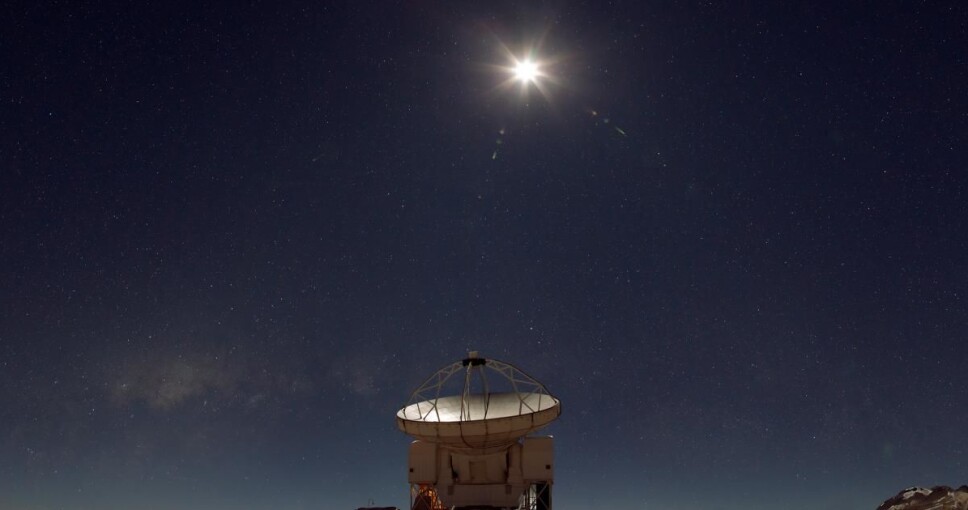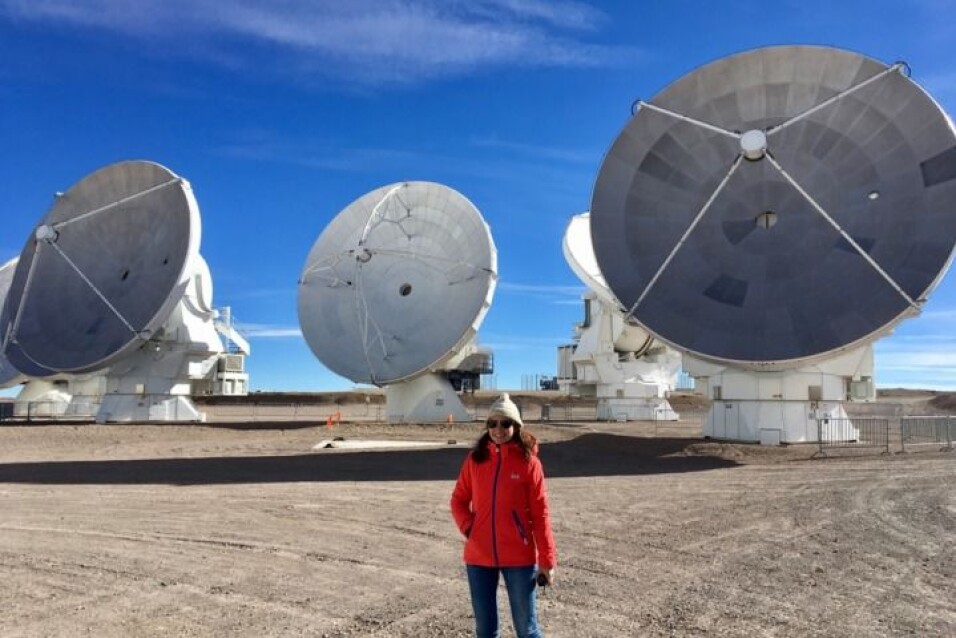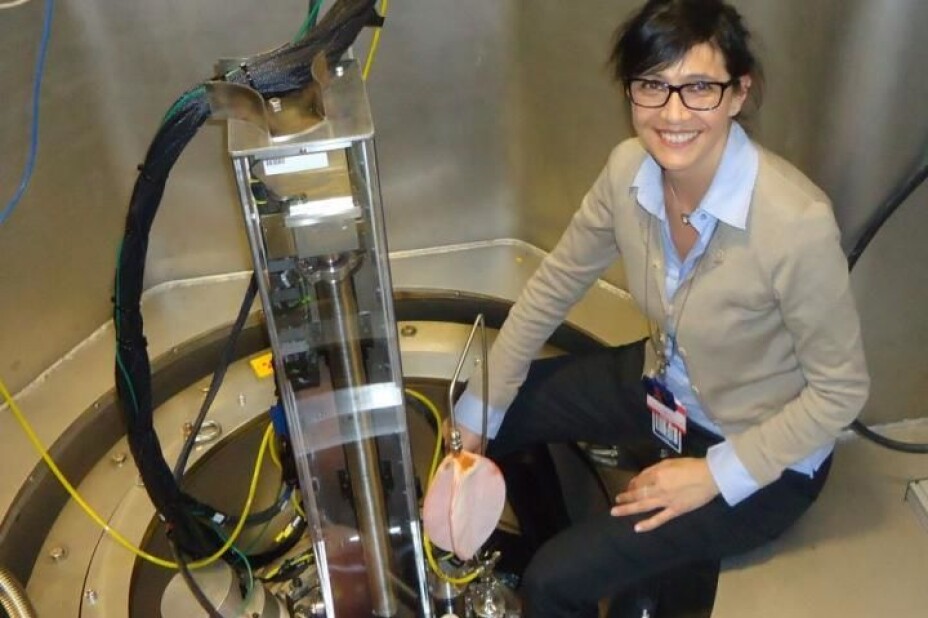This article is produced and financed by University of Oslo - read more

Astronomy sets new records with revolutionary telescope
The EU-funded design study of the world's largest sub-millimetre astronomical telescope is about to start. The work is led by the University of Oslo.
“Towards an Atacama Large Aperture Submillimeter Telescope”, in short AtLAST, is a three year long design study for a new astronomical sub-millimetre observatory.
"Our project paves the way for building the largest single-dish sub-millimetre telescope in the world, which will deliver the deepest and widest maps of the sky ever obtained at these wavelengths", says enthusiastic Dr. Claudia Cicone, new associate professor at the Institute of Theoretical Astrophysics/University of Oslo (UiO), and study lead of AtLAST.
Mapping the molecular fingerprints of Galaxies
This project will bring technological and engineering advances, well beyond the state-of-the-art. AtLAST will consist of a huge single antenna dish of 50 meters in diameter. Astronomers need such large aperture to enable transformational observations of faint and distant astronomical sources. These can be a protostellar core (the stellar nursery made of dust and gas) as far away as in the centre of the Milky Way or a small galaxy in the distant Universe.
Furtheramore, AtLAST will be able to observe, in "one shot", a portion of the sky as wide as 2 degrees, an area equivalent to 16 full Moons. This is hundreds of times bigger than the area seen by any existing or planned large sub-millimetre telescopes.
"These characteristics make AtLAST unique in the landscape of future astronomical facilities, but they also imply substantial technological challenges", acknowledges Cicone.

To provide AtLAST with high accuracy and performance in the sub-millimetre window, any surface imperfections on the 50 meters large dish cannot exceed a fraction of the diameter of a human hair.
The unique acquisition speed of AtLAST (up to 6 orders of magnitude larger than any current facility), combined with its high sensitivity and spatial resolution, will enable astronomers to have a much more complete view of the sub-millimetre sky, including those faint and distant sources whose positions cannot be identified with current telescopes.
"AtLAST will take a molecular fingerprint of proto stars and planets in distant regions of our Galaxy and galaxies in the nearby Universe", adds Cicone.
On the one hand, AtLAST will open a new space for discovery in the field of Astrophysics, and, on the other hand, will enable scientists to pioneer a new era of "green" astronomical facilities.
The first environmentally-friendly observatory
Integrating environmental sustainability on the scale envisioned for AtLAST is by itself ground-breaking. Solar power seems an obvious choice, since the telescope will be located at a high dry site in the Atacama desert, the place with the largest solar irradiance on Earth.
"However, powering an observatory such as AtLAST with renewable energy is a very ambitious goal, and requires performing energy system modelling and fundamental research in the development of solutions for energy storage", explains Cicone.
"To this aim, we are collaborating with Dr. Sabrina Sartori and her team at the Department of Technology Systems/University of Oslo, who are experts in this field", she adds.
"For us, the design of the first ever conceived sustainable energy storage system solution to supply the entire needs of a telescope is an exciting challenge. The project will also be an opportunity to provide local and isolated communities with “clean” electricity and possibly foster a new way of thinking for the new generations", comments Sartori.

Combining interdisciplinary expertise
AtLAST is an observational facility of international interest, whose data will be transformational not only for Galactic and Extragalactic Astronomy, but also for the fields of Cosmology and Solar Physics.
The project will be carried out by an international consortium of partners, each with their expertise.
Besides managing the project, the astrophysicists at the Institute of Theoretical Astrophysics will contribute significantly to the scientific research activities, specifically the computational modelling and simulations of the extragalactic observations with AtLAST. The other team from UiO, led by Dr. Sabrina Sartori at the Department of Technology Systems, will be in charge of the environmental sustainability study of AtLAST. The work package addressing the scientific goals of the project will be led by Dr. Pamela Klaassen at the UK Astronomy Technology Centre in Edinburgh.
Astronomer Dr. Tony Mroczkowski from the European Southern Observatory (ESO) will lead the antenna design study and coordinate the engineering work that will be carried out by MT Mechatronics, a German company leader in building astronomical facilities.
Dr. Carlos De Breuck and Dr. Evanthia Hatziminaoglou, both researchers at ESO, will be in charge of the activities for determining the best location for AtLAST, and the study of the possible models for operating the telescope, respectively.

A giant technological leap
The 3.5 million euros grant assigned by the European commission under the Horizon2020 research and innovation programme will enable a comprehensive design study for AtLAST, which will take into account technical, operational and environmental challenges of this ground-breaking new infrastructure, possibly ready in the 2030s.
The project represents a giant technological leap for astrophysicists and for scientists exploring ways to make AtLAST fully powered by renewable energy – the first study of such kind for an astronomical facility, concludes Cicone.


































